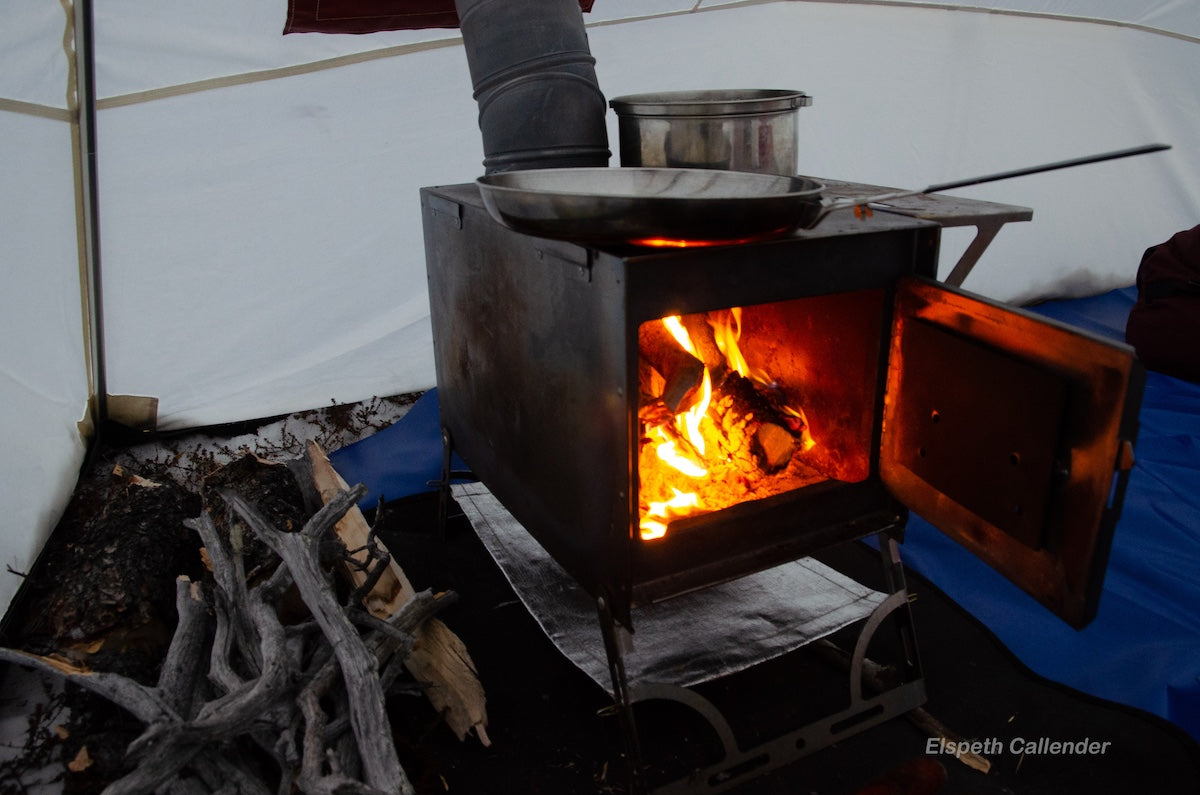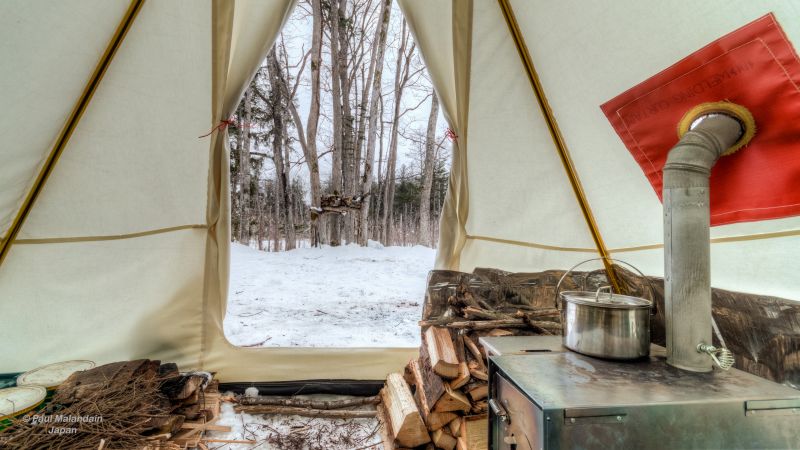Snowtrekker Tents Sleeping Bag Cover
 Bivy bags, bedrolls, and swags are a great piece of kit when you are sleeping without a tent. You can find them with many different types of weatherproofing, from technical fabrics to treated canvas. The Snowtrekker family, however, are big fans of sleeping in tents, and wanted a option that wasn’t made from technical fabrics because in a tent we really have no need for additional weatherproofing. With this in mind, we decided to have a crack at making our own sleeping bag cover.
Bivy bags, bedrolls, and swags are a great piece of kit when you are sleeping without a tent. You can find them with many different types of weatherproofing, from technical fabrics to treated canvas. The Snowtrekker family, however, are big fans of sleeping in tents, and wanted a option that wasn’t made from technical fabrics because in a tent we really have no need for additional weatherproofing. With this in mind, we decided to have a crack at making our own sleeping bag cover.
After a few brainstorming sessions and a bunch of testing, we settled on our design. We sourced a 6.5 ounce untreated ripstop cotton, paired it with a #8 YKK zipper and decided on a simple rectangular shape in two widths that would work with multiple different styles of sleeping bags. We especially wanted a wide option that would allow both the bag and a pad to slip inside the cover.
The initial idea to make a sleeping bag cover was simply to protect our investment in our bags. We most often use cots in our tents and utilize them as seating when we are in the tent, meaning we also sit on our sleeping bags. The sleeping bag cover could provide the first line of defense from dirt, debris, and small spills, and be much easier to clean than our sleep system. As you can imagine, hot tent camping comes with the risk of accidentally bumping you or your gear into the stove, a lantern, or a candle. Natural fibers are much more resistant to melting than the technical fabrics most often used in sleeping bags, so using a cotton fabric for the cover would also provide a measure of protection from those accidents as well.
While protecting the sleeping bag was the original idea, as we tested the design, we knew that it would provide other benefits as well. The biggest one we noticed right away was how warm we slept when using them. We have often used a piece of canvas or a poncho over our sleeping bags to increase our comfort when we were on the edge of the bag’s rating. Just the single layer of fabric making a pocket around our bags provided a greater boost to our insulation through trapping a little more air between our bags and the sleeping bag cover. Another added benefit was that besides creating that dead air insulating layer, the breathability of the sleeping bag cover moved the frost line from the surface of the sleeping bag to the surface of the cover. What is a frost line? The frost line is the layer of frost that forms on the outermost layer when moisture is being passed through layers of fabric, and hits air that has dropped below freezing. Adding the breathable outer layer helps keep moisture away your sleeping bag by allowing frost to form off the bag…and a dry sleeping bag is a warm sleeping bag. We’ve found the sleeping bag covers have been quicker and easier to dry than our sleeping bags.
The boost in insulation has also helped when temperatures are in between the ratings for our sleeping bags. When it is colder out than what our light bags are rated for, but not quite cold enough for a warmer sleeping bag, we often will choose the warmer bag anyway and leave it partially unzipped to sleep a little cooler. One of the disadvantages to this option has been that if we turn in the night, it’s not unusual to flip the top of the bag off and wake up cold. With the sleeping bag cover, we discovered if we leave our sleeping bag partially unzipped but fully zip the cover, we can still vent excess heat very well, but the sleeping bag cover keeps the top of the sleeping bag exactly where it needs to be. Likewise, if you want to increase the temperature rating of your sleeping bag by adding a quilt for extra insulation, the sleeping bag cover will keep the quilt in place while you sleep so you don’t wake up and find that your quilt has slipped off during the night. The wide bag we made has also served this function, with plenty of room to have our sleeping pad and bag both inside the cover keeping everything in its place.
Our mission at Snowtrekker Tents is to equip people to thrive outside when it gets cold. We think our version of a sleeping bag cover has been a great addition to our camping kit, and think it can help you, too, by protecting your investment in your sleeping bag, keeping you warmer, and helping keep your sleeping bag drier. While it may add a few more pounds and a little bulk to your sleep system, we think the benefit of using a sleeping bag cover is worth it.








